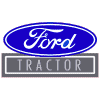31
9N,2N,8N, Ford Tractors / Re: Buying a 9N - question
« on: August 11, 2009, 04:29:02 PM »
The major differences between the 9N and 8N are that the 8N has a slight bit more horsepower, has a 4 speed transmission compared to the9N's 3 speed, and the 8N has an improved hydraulic system.
The 8N has position control -- essentially the tractor will hold an implement at whatever position you set it at. The 9N has only draft control, which will not. Without going into tons of detail (we can if you want) the 9N is fine for anything you want to do EXCEPT if it requires position control.
The Zane Thang was developed for precisely that poblem; it is an external device that gives position control to tractors like the 9N that lack it. I do not have first hand experience with Zane's Thangs but I hear that they work exceptionally well.
Depending on what you want the tractor to do and how "old fashioned" you are willing to be with things like brush hogs, it may not matter. Older equipment designed for use with pre-position control tractors used a solid top link and a chain & rack system where you lifted the implement up, set the chain on the rack where you wanted it, and let the hydraulics all the way down. The implement then hung from the chains & top link at that height. Not as handy as position control but it worked for many years.
Pete P.
Harborcreek, Penna.
The 8N has position control -- essentially the tractor will hold an implement at whatever position you set it at. The 9N has only draft control, which will not. Without going into tons of detail (we can if you want) the 9N is fine for anything you want to do EXCEPT if it requires position control.
The Zane Thang was developed for precisely that poblem; it is an external device that gives position control to tractors like the 9N that lack it. I do not have first hand experience with Zane's Thangs but I hear that they work exceptionally well.
Depending on what you want the tractor to do and how "old fashioned" you are willing to be with things like brush hogs, it may not matter. Older equipment designed for use with pre-position control tractors used a solid top link and a chain & rack system where you lifted the implement up, set the chain on the rack where you wanted it, and let the hydraulics all the way down. The implement then hung from the chains & top link at that height. Not as handy as position control but it worked for many years.
Pete P.
Harborcreek, Penna.

